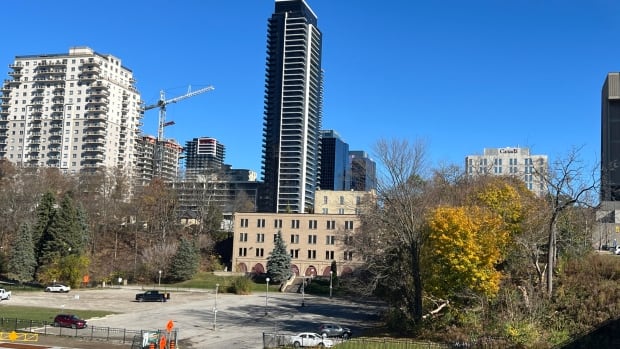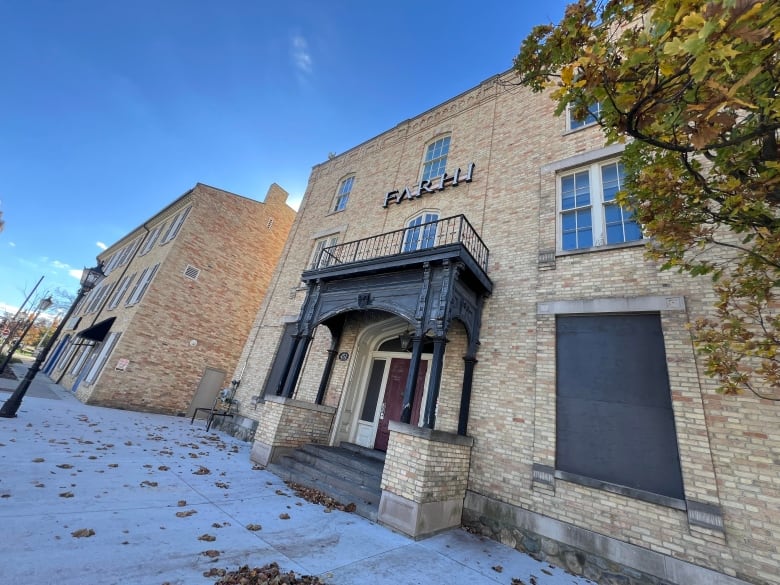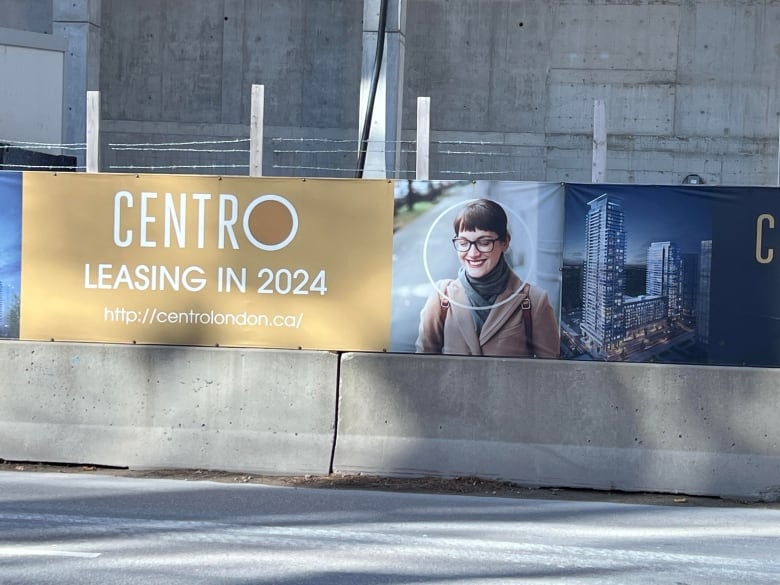
Almost four years after it was approved by city council, the site of a planned 40-storey tower across from Museum London remains as it was back in June 2021: A group of empty buildings.
Owned by Farhi Holdings Corp., the properties at 435-451 Ridout St. N. were the subject of a development application to construct a mixed-use tower and add 280 badly needed residential units to the core of the southwestern Ontario city.
At the time, the application raised eyebrows. Farhi is better known for holding downtown London properties, many of them untenanted.
After debates in council chambers over flooding concerns, the tower’s height and worries about preserving the heritage properties, the building was approved by a 12-2 vote.
Stephen Turner, one the two then councillors who voted against Farhi’s plan, was skeptical the site would ever see a shovel.

“I don’t have a lot of faith this building will ever get built,” said Turner, who did not seek re-election in the 2022 municipal election. “I say to the applicant, ‘Prove me wrong,’ but I’m not quite convinced.”
In March, CBC News reached out to Farhi Holdings Corp. for comment about the status of the project.
The company declined an interview, but said in a statement they’ve been “meticulously advancing the 451 Ridout project for over 15 years.”
CBC also asked for an update this week but his staff declined an interview.
Farhi cites ‘number of barriers to project initiation’
The March statement to CBC said a number of factors have delayed the start date, including the city’s construction of the Downtown Loop bus rapid transit route, the economic fallout of the COVID-19 pandemic and an appeal filed by heritage advocates, which has since been dropped.
“Currently, we are focused on finalizing our site plan application, an essential step before beginning construction. Unfortunately, there are a number of barriers to project initiation beyond the site plan approvals required.”
Among the barriers listed in Farhi’s statement:
- Steep interest rates.
- High residency turnover downtown.
- A “lack of incentives” available to developers in London, which the Farhi statement says are available in other jurisdictions, including Windsor and Oshawa.
The city’s planning office confirmed to CBC that no site plan application has been submitted for the property, a step that comes before building permits are issued and construction can begin. Also, the city hasn’t received a heritage alteration permit for that property, which is required because the yellow brick buildings on the property are heritage-designated. A heritage alteration permit would be required before a building permit could be issued.
Farhi’s penchant for sitting on properties in London was the focus of a feature story in the Globe and Mail last week.
Other towers are coming to the core
Meanwhile, a lot has happened in downtown London since 2021.
A number of high-density residential towers have been approved, including a plan by York Developments to build two towers, 53 and 43 storeys, nearby at 50 King St. It’s a project that will bring 800 units to London’s core.
Steps away, Old Oak Properties is now leasing and putting the finishing touches on the first tower of the Centro development in the block bordered by Dufferin, Talbot and Fullarton streets. Once complete, it will bring more than 650 units to downtown, 110 of them below market value.

London city council has also moved to accelerate construction of residential units, with the city facing rapid growth and a falling vacancy rate all adding to an ongoing housing crisis.
In 2023, the city pledged to build 47,000 units by 2031, with council getting regular updates about the progress of hitting that target.
A staff report to council in September said development applications amounting to just under 20,000 residential units have been approved by council since the pledge, but remain at various stages of approval. The same report said 51 per cent of those applications are considered “inactive” because they haven’t progressed in development stages for a two-year period.
Mayor Josh Morgan told CBC News he doesn’t have an update on Farhi’s plans for the Ridout property but said he’s willing to work with all developers to speed approved projects through to the construction phase.
“There are a large number of buildings, not just from this developer, but from developers across the city, who have council approval and they’ve not moved forward yet,” he said. “My approach is to work with any developer in the city on the things that council has approved to find out what the barriers are and how we can bring them to fruition.”
Tower projects are complex, developer rep says
London Development Institute (LDI) executive director Mike Wallace said the city is making progress on getting shovels in the ground on approved projects. He also said building towers in a downtown core is a complex process affected by multiple variables.
“The labour needed to build highrises requires very specialized trades, and those trades are very busy these days,” said Wallace.
He said it requires careful planning to ensure building permits are approved and ready when crews are available. With their labour in high demand, crews can’t be kept idle if the approval process is delayed.
His group represents a handful of London’s largest developers. Farhi Holdings is not represented by LDI and Wallace doesn’t have any knowledge about why the Ridout project hasn’t started.
Wallace also said economic conditions, such as high interest rates, can throw the finances of a tower project out of kilter.
“You may sit and not build right away until the demand comes back, and that’s happening now.”
As of this August, London had added 4,400 new units, roughly nine per cent of the 47,000-unit target, since making the housing pledge. According to a staff report, the pace is picking up, but is still behind the rate needed to hit the target
“While we are ahead of 2023’s performance, additional efforts will be required to close the gap and meet future targets,” the report said.